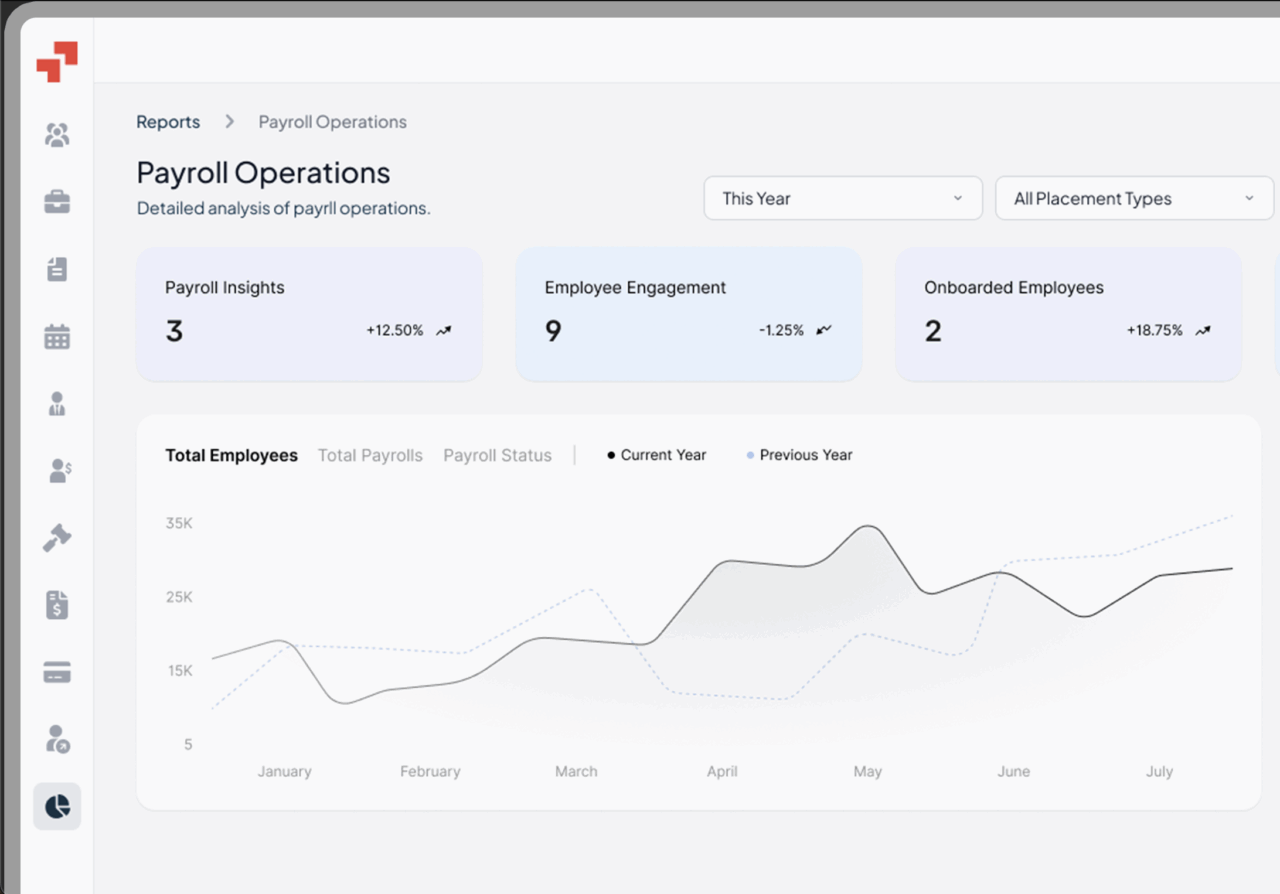Off-Cycle Payroll
In today’s fast-moving business world, companies increasingly find themselves needing to pay employees outside the usual pay schedule. Whether it’s for new hires, terminations, bonuses or error corrections, knowing what off-cycle payroll is — and how to manage it — can be a game-changer. For global companies looking to expand and manage international workers, understanding off cycle payments and the associated tax implications is critical.
Table of Contents
- What is co-employment?
- What are co-employment laws?
- Why is co-employment a risk?
- What are co-employment rules
- Co-employment do’s and don’ts
- How does co-employment work?
- What is the difference between co-employment and joint employment?
- Co-employment vs PEO
- Co-employment vs employee leasing
- Is co-op considered a full-time employee?
- Is it illegal to work for two jobs in the same industry?
- Co-employment examples
- Practical Case Study Example
- PamGro and Co-employment: Your Global Partner
What is Off-Cycle Payroll?
Off-cycle payroll refers to the process by which a business issues employee payments outside of the standard payroll cycle (for example, weekly, bi-weekly or monthly).
The concept of off cycle payroll spans scenarios like bonuses, reimbursements, terminations or corrections. Using off cycle payments allows organisations to respond more flexibly than waiting for the next scheduled payday.
Typically, companies follow a predictable pay schedule (on-cycle payroll). But when an employee starts mid-period, leaves early, or when a payroll error happens, processing payroll through an off-cycle payroll run enables timely payment. This flexibility is particularly relevant for firms expanding globally or using an Employer of Record (EOR) like PamGro, which must handle multiple jurisdictions and payment schedules. In such a context, managing off cycle pay properly is part of maintaining compliance and employee trust.
How Does Off-Cycle Payroll Work?
An off cycle payroll run is triggered by exceptions: missed hours, severance pay, bonuses or corrections. The payroll team identifies the event, processes an off-cycle payment through the payroll system (sometimes via special designation), ensures correct taxes/withholdings, and issues the payment separately from the regular run.
In practice, payroll software (e.g., Zoho or others) often offers an “Off-Cycle Payroll” option where you select the pay period, include only relevant employees, adjust for benefits/deductions, and approve the run. The process typically involves more manual steps and higher oversight than on-cycle runs because the payment is outside the norm. For companies working globally, coordinating off-cycle payments via a global EOR ensures consistent international handling of payroll tax regulations, currencies and labour regulations.
What is an Off-Cycle Payment?
An off cycle payment is any payment made to an employee outside the standard scheduled payroll cycle. It could be for bonus, severance, expense reimbursement or financial hardship correction.
Since off cycle payments are ad-hoc, they often require separate documentation and approval. For example, a new hire may start between pay periods and receive an off cycle payment to cover the gap. Or an employee may leave mid-period and need additional pay as final pay. Because these payments are by nature outside standard cycles, they carry special administrative, tax and compliance considerations, especially for international payrolls facilitated by an EOR provider.
How Long Does an Off-Cycle Check Take?
The timeframe for issuing an off-cycle check or payment varies by payroll provider, region and banking process — it may take from one calendar day up to a week or more.
For example, some systems note that preparation may take “a few hours to days,” then bank processing may add time. In global operations, additional factors like currency conversion, local banking holidays and cross-border compliance can lengthen it. When using PamGro’s global EOR services, having clarity on cut-offs, currency settlement and local payroll deadlines helps speed up off cycle pay-outs in international contexts.
Why is Off-Cycle Payroll Important?
Off-cycle payroll is important because it enables organisations to pay employees accurately and on time outside the usual payroll window. It supports employee satisfaction, overtime legal compliance and operational flexibility.
Delaying a payment due to waiting for the next regular cycle can erode trust, cause hardship for employees and expose the business to legal risk. Indeed, research notes that delayed payment even once may cause difficulty for employees covering essentials, impacting higher job satisfaction. For companies expanding across borders via a EOR model, being able to run off cycle payroll across multiple jurisdictions means meeting local law on final wages, responding to bonus or incentive distribution demands and maintaining competitive employer branding internationally.
What is the Difference Between Off-Cycle Payroll and Regular Payroll?
The core difference: regular (on-cycle) payroll runs follow a fixed compensation schedule covering all employees, while off-cycle payroll runs are unscheduled, targeted payments outside that cycle.
With on-cycle payments, payroll teams rely on predictable timing, standard deductions, automated withholding and bulk processes. But off-cycle payroll demands special handling: incentive payments, one-time payments, manual adjustments, higher scrutiny on taxes and compliance. For international employers working with an EOR , distinguishing these two is crucial – many global payroll systems treat off-cycle runs differently, requiring separate approval flows and specialised oversight to handle local tax and labour law nuances.
On-Cycle vs Off-Cycle Payroll for Businesses
For businesses, on-cycle payroll provides stability, scalability and cost-efficiency; off-cycle payroll provides agility, exception handling and responsiveness. But off-cycle runs come with higher cost, complexity and risk.
When expanding globally, businesses may prefer the systematic cadence of on-cycle payroll to simplify operations, especially when using an EOR. But business realities (e.g., new hire mid-period, termination, bonus payout) often require off-cycle flexibility. Managing off-cycle runs well supports HR in maintaining morale, supports finance in avoiding penalties, and supports global growth by ensuring pay-outs keep pace with operations.
What are the Benefits of Off-Cycle Payroll?
Benefits of off-cycle payroll include timely payment of employees, improved employee satisfaction and retention, compliance with legal requirements, flexibility for special payments (bonuses, final pay) and maintaining employer brand.
By issuing payments promptly, companies demonstrate reliability, which is especially important for international talent where competition for skilled workers is high. Off-cycle payments for new hires, terminations or bonuses show responsiveness. From a compliance standpoint, timely final wages (which often must be paid by law within certain timeframes) can be met. For global operations supported by PamGro, this means addressing multi-jurisdictional payroll needs, avoiding penalties, and streamlining paychecks and exceptional payments in one unified process.
How to Effectively Manage Off-Cycle Payroll
To manage off-cycle payroll effectively, companies should establish a clear policy to process off- cycle payments , choose reliable payroll software/provider, maintain accurate records, communicate clearly with employees and integrate global payroll compliance.
Key steps include:
- Clear policy: Define when off-cycle pay is permitted, approval flows, cut-off deadlines and eligible employee types.
- Reliable system/provider: Use payroll tools or an EOR (like PamGro) capable of handling off-cycle runs across jurisdictions.
- Accurate records & compliance: Track reason, date, amount, taxes, approvals – essential for audit and global compliance.
- Employee communication: Employees should understand why and when they receive off-cycle pay – addressing transparency and trust.
- Minimise frequency: Use off-cycle only when necessary. Over-reliance increases cost and complexity.
What are the Types of Off-Cycle Payments?
Types of off cycle payments include one-time bonuses, severance or termination pay, reimbursements, salary advances, commissions, missed regular pay corrections and final pay to departing employees.
Here are some examples:
- Bonus/Incentive: A sudden company-wide bonus awarded outside regular pay cycle.
- Final Pay/Severance: An employee leaving mid-period receives payout promptly.
- Reimbursement: Employee incurs business expense and needs payment before next regular payday.
- Salary Advance: Employee requests partial pay early due to hardship.
For global operations, it’s important to align such payments with local tax/settlement rules and foreign currency constraints.
What is an Example of Off-Cycle Payroll?
An example: A new hire joins on the 20th of a month, the standard payroll runs on the last day. Rather than wait until next month, the payroll team processes an off-cycle payment to cover the days worked from 20th–30th. That payment is outside the normal schedule, qualifies as off cycle, and the remaining salary is included in the next regular run.
In a global scenario, suppose a company uses an EOR like PamGro to hire talent in India. The talent begins mid-pay period and must be paid locally in INR. PamGro executes the off-cycle payment, manages local tax withholding, documents the one-time run, and ensures the employee receives funds promptly, boosting onboarding experience and reducing risk of pay-delay dissatisfaction.
Practical Example / Case Study
A fast-growing SaaS startup headquartered in Germany decides to hire remote developers in India using an EOR service. One of the new hires begins on March 18, while the company’s regular pay run is on 3 April (monthly). Waiting nearly two weeks would risk employee dissatisfaction and delay onboarding payoff. Using off-cycle payroll, the EOR service provider processes an ad-hoc payment covering March 18–31 via INR direct deposit, handling local tax withholding and currency conversion seamlessly. As a result, the developer receives pay promptly, feels valued, and the company avoids internal disruption and goodwill loss — supporting its global expansion effort effectively.
PamGro: Your Trusted Partner for Global Expansion
When you’re expanding globally and managing international teams, you cannot afford payroll delays, compliance missteps or ad-hoc administrative drain. That’s where PamGro steps in — with full EOR support handling both regular and off-cycle payrolls across jurisdictions.
Whether you need to pay a new hire mid-period, issue a global bonus or provide final settlement for an exit, our platform ensures accurate, timely, compliant payment across countries — freeing your HR and finance teams to focus on growth. Talk to PamGro today to learn how we streamline off-cycle payroll and global workforce expansion together.
Frequently Asked Questions – Off-Cycle Payroll
No — off-cycle should not become a substitute for regular pay schedules. It’s designed for exceptions.
Yes. With off-cycle payments, tax withholding may differ (e.g., supplemental wage rules). Extra care is needed.
Typically yes. Because it involves separate runs, manual intervention and exceptions, it can lead to higher per-transaction cost.
No — off-cycle should not become a substitute for regular pay schedules. It’s designed for exceptions.
PamGro provides globally-compliant payroll capability across multiple jurisdictions. They handle the complexities of off-cycle payments across currencies, labour laws and tax systems — enabling you to stay agile and compliant without setting up local entities.
Hire the Best Talent, Anywhere






